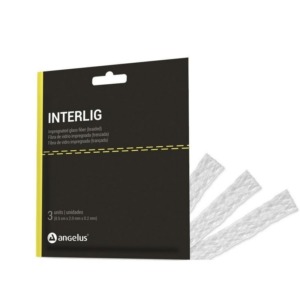Features
Easy to cut: special scissors are not required.
Pre-impregnated (ready to use): saves time and material.
Glass fiber: high flexural strength.
Malleable fiber: easy to adapt.
Packed in sachets: easy handling; protects fibers from light and heat.
Description
The solution to immediate prostheses and splitting in Periodontics
Product description
Braided glass fiber impregnated with light-cured composite resin
Indication
Splinting in periodontics.
Splinting of traumatized teeth.
Fabrication of adhesive direct temporary prostheses.
Reinforcement of large restorations.
A single strip for one to two patients.
FAQs
What are the indications of interlig?
Periodontal splints.
Splinting of traumatized teeth.
Fabrication of direct and indirect adhesive temporary prostheses.
How should interlig be prepared before use?
Interlig is already resin-impregnated and silanated.
What the advantage of the industrial resin impregnation of interlig?
The pre-impregnated fiber is ten times more resistant than fibers that are not
impregnated during their fabrication. For a complete absorption of the resin by the
fiber, besides the appropriate volume of resin, a period above 24 hours is required
for silane treatment and immersion in resin.
